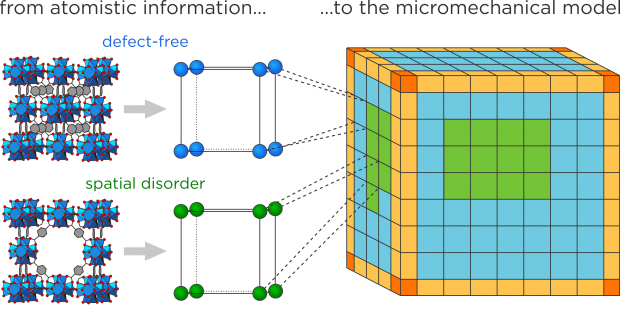
Abstract
Computational insight in the impact of cooperative phenomena and correlated spatial disorder on the macroscopic behaviour of metal-organic frameworks (MOFs) is essential to consciously engineer these phenomena for targeted applications. However, the spatial extent of these effects, ranging over hundreds of nanometres, limits the applicability of current state-of-the-art computational tools in this field. To obtain a fundamental understanding on these long-range effects, the micromechanical model is introduced here. This model overcomes the challenges associated with conventional coarse-graining techniques by exploiting the natural partitioning of a MOF material into unit cells. By adopting the elastic deformation energy as the central quantity, the micromechanical model hierarchically builds on experimentally accessible input parameters that are obtained from atomistic quantum mechanical or force field simulations. As a result, the here derived micromechanical equations of motion can be adopted to shed light on the effect of long-range cooperative phenomena and correlated spatial disorder on the performance of mesoscale MOF materials.
